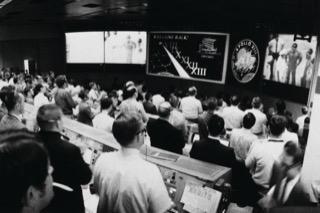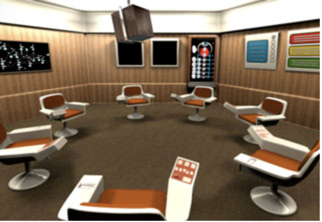Do We Still Need Data Cockpits?

In my blog The Sweet Spot, I like to share compelling things to read and digest that I’ve run across in my explorations of the data zeitgeist.
One topic that intrigued me recently was that of data cockpits. What is a data cockpit? This term describes exactly what you think it might: a single place where the most senior leaders of an organization can get an overview of the entire enterprise. The question I’ve been pondering for Chief Data Officers and other data leaders is: “Is a traditional data cockpit necessary today? Or even possible?”
Here are three historical examples of data cockpits for context and inspiration:
The Outlook Tower: If you’ve strolled through the historic center of Edinburgh, Scotland, you may have visited The Outlook Tower on the Royal Mile near Edinburgh Castle. This amazing building was conceived as an urban dashboard to provide a multi-level overview of the city and its place in the world. The ground floor places the city in a worldwide context. Each floor above zooms into a more local level. The top floor is a camera obscura allowing visitors to see the actual city in high detail. It’s a pre-computing data cockpit that doubles as a tourist attraction.
The NASA Control Center: President John F. Kennedy gave his famous “We choose to go to the moon” speech in 1962, setting forth a seemingly impossible goal at the time, to land someone on the Moon by 1970. Less than seven years later, humankind did just that. But would it have been possible without NASA’s Mission Control center in Houston? The original Mission Control was a truly impressive data cockpit, featuring huge screens showing the overview of the mission, with rows of personnel who had access to granular levels of detail and the ability to explore data anomalies in real time.

Project Cybersyn: This cockpit, a cross between James Bond and Austin Powers, was built and operated between 1971 and 1973 for Chile’s President Salvador Allende. The goal was to manage the national economy through a distributed support system, and featured a national network of telex machines linked to one mainframe computer. Computing was slow, arduous work at the time, so the groovy chairs had ashtrays and holders for Whiskey glasses. It also featured dozens of assistants scurrying just out of sight behind the walls to manually tabulate, update and correct incoming data as necessary.

First-Class data for everyone
Clearly, these three examples of data cockpits are decades old (or older), but they do offer lessons for data leaders in today’s highly distributed data world.
Share relevant data with trusted colleagues. Just like CEOs, data leaders need overviews, but they also need trusted teams who can work with detailed data to make great decisions and chase opportunities.
Empower users to create tailored views. Any successful data culture should allow a data leader to create an overview, to zoom and filter, and to access details on demand. After all, if you can’t zoom in, what good is the ability to spot problems only at a high level? In addition, everyone with appropriate data rights should be able to view the data that makes their jobs more effective, or even possible.
Decentralize control as well as data. Data leaders should have an overview of their organization, but too much centralized control leads to decision myopia, not to mention frustration from employees lower down in the organization.
As you might have guessed, my view is that data cockpits as traditionally defined should go the way of the camera obscura. It’s no use focusing only on what the CEO needs to see. Unless you build a thriving data culture, the people who need to respond and act will be blocked by organizational or data literacy barriers. Data cockpits also tend to compromise data quality, especially because the prevailing opinion of any organization’s data quality tends to be higher the further up in the organization you go.
And of course, data democratization is not just a movement, it’s a necessity. Rather than a single, centralized and monolithic cockpit, data leaders will be better served thinking about a series of customizable dashboards. An analogy to consider is how airplane entertainment evolved from a single movie shown in Coach class and a variety of channels in Business and First Class to where we are today: every data “passenger” has a customizable view in their organizational seatback of the data that helps them make better decisions.
Recent research highlights that breaking down data silos is a top priority for data-focused executives in 2022. Will this signal the death knell of the traditional data cockpit? Based on how much we have to monitor these days – far more than a single city or a single mission to space – that’s surely not a bad thing.






